This article was medically reviewed by Lacy Windham, MD. Lacy Windham, MD, is a Board-Certified Obstetrician & Gynecologist in Cleveland, Tennessee. Dr. Windham attended medical school at the University of Tennessee Health Science Center in Memphis. Her residency was completed at Eastern Virginia Medical School in Norfolk, Virginia. She was the recipient of multiple awards during her residency training, including Most Outstanding Resident in Maternal Fetal Medicine, Most Outstanding Resident in Oncology, Most Outstanding Resident Overall, and Special Award in Minimally Invasive Surgery.
There are 16 references cited in this article, which can be found at the bottom of the page.
This article has been viewed 678,655 times.
Herpes is caused by the herpes simplex virus. It has two variations, the HSV-1 and HSV-2. HSV-1 usually manifests as a cold sore, or oral lesion, but may sometimes appear on the genitals. HSV-2 refers to genital herpes. HSV-2 is the most common viral sexually transmitted infection (STI) in the US and causes infections of the skin and mucous membranes, rectum, eyes, and central nervous system. Herpes is a lifelong and incurable STI.[1] If you think you may have the virus, follow a few simple steps to recognize if you have herpes.
Steps
Watching for Signs of Herpes
-
1Look for itchy lesions. The main way that you will be able to tell if you have genital herpes is through the lesions that appear on your genital area. These present approximately 6 days after infection. HSV-1 lesions will usually appear on or in the mouth. HSV-2 lesions will appear on the thighs, buttocks, rectum, and perineum. If you are female, they will present on the vulva, labia, internal vaginal entrance, and cervix, while they appear on the glands of the penis and shaft and inside the urethra if you are male.
-
2Notice other physical symptoms. The onset of the lesions will likely be accompanied by other physical symptoms as well. You may suffer from headache, fatigue, fever, and swelling of the lymph nodes of the genital region (these nodes are located above and to the sides of your genitals).[4] You may also get other viral symptoms since your body is trying to fight off the herpes virus.[5]
- These include flu-like symptoms such as fever, general aches and pains, and overall discomfort.[6]
Advertisement -
3Watch for a change to blistering sores. The itchy, burning lesions will start to change hours to days after they appear, depending on your particular case. They will change from the burning, itchy lesions into blistering, oozing sores. They will start to form patches or rows and start secreting a pus-like substance.[7]
- This liquid is typically straw-colored with streaks of blood in it. [8] .
-
4Take note of improvements. Eventually, the sores will begin to crust over. Not too long after this phase, the skin around the sores will begin the heal and grow new, non-irritated skin. They should heal without scar formation. The time frame of this stage depends on the severity of your outbreak.
- These symptoms are indicative of the first initial outbreak. These symptoms are always worse and more severe than other outbreaks. The first outbreak can last anywhere from 2-6 weeks. Any subsequent outbreaks last, on average, about 1 week. [9]
Seeking Medical Diagnosis
-
1Learn the different types. There are two different kinds of viruses that are considered herpes. HSV-1 is the virus that is responsible for cold sores, although it can also cause genital herpes.[10] HSV-2 is the primary virus that is responsible for genital herpes. There are many more cases of HSV-1 than HSV-2; about 65% of people in the U.S. have been infected with HSV-1, often during childhood.[11] Many people that have herpes are not aware that they have it, especially since it causes no symptoms outside of an outbreak of lesions. Because of this, there are hundreds of thousands of new cases of herpes in the US alone each year, and about 80% of people infected with HSV-2 do not show symptoms.[12]
- The most direct way to spread herpes is through contact with the lesions or the secretions that contain the virus. However, it is possible to spread herpes outside of an outbreak when the virus is shed from the seemingly uninfected skin. This shedding does decrease as time passes since your first infection, reducing up to 70% after 10 years.
-
2Receive laboratory confirmation from your doctor. If you think you may have lesions or sores from herpes, you need to get medical tests done in order to be sure. The polymerase chain reaction, or PCR, test is the standard way of testing for the herpes virus. This test copies your DNA from a blood sample (or from a lesion or spinal fluid). This DNA is tested to reveal whether you are infected with HSV, and which strain of the virus you have.[13]
- You may also have a viral culture performed. During this test, your doctor will swab one of your lesions and place the sample in a Petri dish. This test takes a little time because the virus has to have time to grow. Once virus growth is achieved, your doctor will examine it to determine which form of the virus you have.[14] This test takes more time and is often less accurate than the PCR.
Treating Herpes
-
1Take valacyclovir (Valtrex). There is no cure for herpes, but you can do some things to help shorten the length of your outbreaks. As soon as you think you may be having an outbreak, you should see your doctor to get some medication. After your official diagnosis, most doctors will provide you with a prescription to have on hand so you can start treatment right away. Valacyclovir is one commonly prescribed medication. If it is your first outbreak, you should start taking it within 48 hours of your first symptoms and take it for 10 days. The dosage will depend on the patient, so you should follow your doctor's instructions.[15]
- In general, the dosage is 1000 mg twice a day for 10 days for the first outbreak. For subsequent outbreaks, the general dosage is 500 mg twice a day for 3 days.
- If you suffer from frequent outbreaks, which means you have more than 9 a year, you can use valacyclovir as a method of suppression therapy. This means you use the drug to help you stop getting outbreaks instead of taking it at the first sign of an outbreak. If this is your situation, take it as your doctor recommends. The general dose is 500 mg twice a day, every day.
- Initial symptoms begin as a mild stinging and itching in the region which will progress to blisters within hours to days. Start taking your medication at the first signs of that tingling, burning or itching.[16]
-
2Try acyclovir (Zovirax). Although valacyclovir is the most current medication for herpes, you can also try an older medicine that is not used as much anymore. This is due to the frequency of the dosing schedule, which causes a decrease in the patient's compliance. However, it is often much cheaper than valacyclovir. As with other medications, the dosage will differ depending on the patient, so you should take it exactly as your doctor prescribes.[17]
- If you are prescribed this medicine during your first episode, in general, you will take 200 mg orally 5 times a day, while awake, for 10 days. If you are suffering a recurrent episode, you should take 200 mg orally 2-5 times a day, while awake, for 5 days (or up to a year).
- You can also get acyclovir as a cream. It is not nearly as effective as oral therapy, but it may assist the healing process in any oral lesions. Apply cream every 3 hours while awake for one week.[18]
-
3Ask your doctor about famciclovir (Famvir). Like the other herpes medications, it is best to ask your doctor for a prescription for famciclovir within 48 hours after your symptoms begin.The dosage is different for each patient, so you should always take it in compliance with your doctor's recommendation.[19]
- The general dose to treat an outbreak is 1000 mg twice a day for one day. The general dose for suppressing a recurrent outbreak is 250 mg twice a day for up to a year.
- In general, you will take a tablet twice a day for one day to treat a recurrent outbreak. To keep outbreaks from recurring, your doctor may suggest you take it twice a day for up to a year.
-
4Try home remedies. There are multiple home remedies you can try to help with your herpes breakouts. Lysine is an amino acid that may possibly reduce the number of outbreaks or reduce symptoms. You can also get more lysine from your diet by eating lysine-rich foods such as fish, chicken, eggs, and potatoes.[20]
- You can also apply lemon balm directly to your lesions. It may provide modest improvement when applied to lesions 4 times a day until your lesions start healing.[21]
- Kind of like the Zovirax cream, you can buy a topical zinc cream that may help. Apply the cream with zinc oxide in it daily to your herpetic lesions to promote healing. You can also rub aloe vera gel onto the lesions to help promote healing and stimulate new skin growth.[22]
References
- ↑ A Wald, Genital HSV-1 Infections, Sexually Transmitted Infections, 2005 June, 82( 3), 189-190
- ↑ https://www.cdc.gov/std/herpes/stdfact-herpes-detailed.htm
- ↑ Beauman, John G. and MC Maj, Genital Herpes: A Review. Am Fam Physician. 2005 Oct 15, 72(8): 1527-1534
- ↑ http://www.nlm.nih.gov/medlineplus/ency/imagepages/9000.htm
- ↑ Beauman, John G. and MC Maj, Genital Herpes: A Review. Am Fam Physician. 2005 Oct 15, 72(8): 1527-1534
- ↑ https://www.womenshealth.gov/a-z-topics/genital-herpes
- ↑ https://www.plannedparenthood.org/learn/stds-hiv-safer-sex/herpes/what-are-the-symptoms-of-herpes
- ↑ Beauman, John G. and MC Maj, Genital Herpes: A Review. Am Fam Physician. 2005 Oct 15, 72(8): 1527-1534
- ↑ Beauman, John G. and MC Maj, Genital Herpes: A Review. Am Fam Physician. 2005 Oct 15, 72(8): 1527-1534
- ↑ http://www.cdc.gov/std/herpes/stdfact-herpes-detailed.htm
- ↑ http://www.ncbi.nlm.nih.gov/books/NBK47447/
- ↑ http://www.medscape.com/viewarticle/821875_3
- ↑ https://www.cdc.gov/std/herpes/stdfact-herpes-detailed.htm
- ↑ Beauman, John G. and MC Maj, Genital Herpes: A Review. Am Fam Physician. 2005 Oct 15, 72(8): 1527-1534
- ↑ https://www.ncbi.nlm.nih.gov/books/NBK47447/
- ↑ Simmons, Anthony, Clinical Manifestations and Treatment Considerations of Herpes Simplex Virus Infection, Journal of Infectious Diseases, 2002 186, Sup 1, S71- S77
- ↑ https://www.ncbi.nlm.nih.gov/books/NBK47447/
- ↑ Simmons, Anthony, Clinical Manifestations and Treatment Considerations of Herpes Simplex Virus Infection, Journal of Infectious Diseases, 2002 186, Sup 1, S71- S77
- ↑ http://www.nlm.nih.gov/medlineplus/druginfo/meds/a694038.html
- ↑ https://www.mountsinai.org/health-library/supplement/lysine
- ↑ https://www.mountsinai.org/health-library/herb/lemon-balm
- ↑ Beauman, John G. and MC Maj, Genital Herpes: A Review. Am Fam Physician. 2005 Oct 15, 72(8): 1527-1534
About This Article
To recognize herpes, look for itchy lesions near your mouth, genitals, buttocks, thighs, or vulva. If your lesions change to blistering, oozing sores, you probably have herpes. Pay attention to any accompanying symptoms, like headaches, fatigue, and fever, which are common with herpes. If you think you’re having a herpes outbreak, visit your doctor, who will prescribe you medication in the form of pills or a topical cream to help reduce your symptoms. For more tips from our Medical co-author, including how to help ease your herpes symptoms with home remedies, read on!

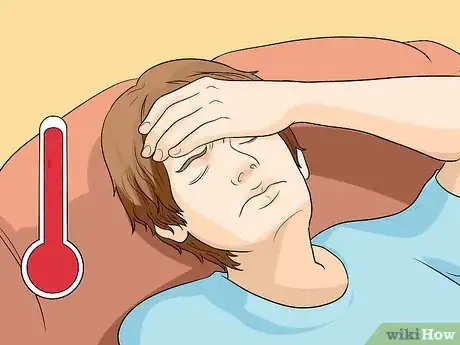
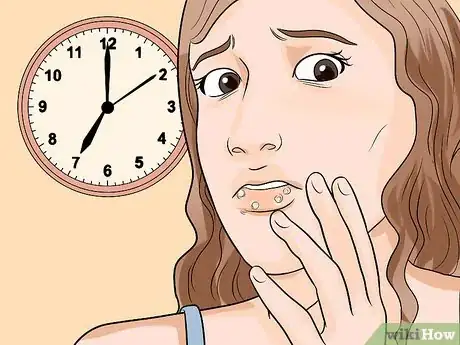
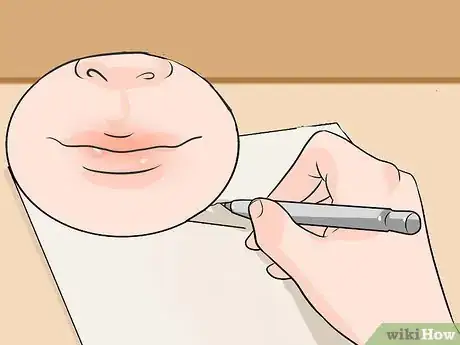
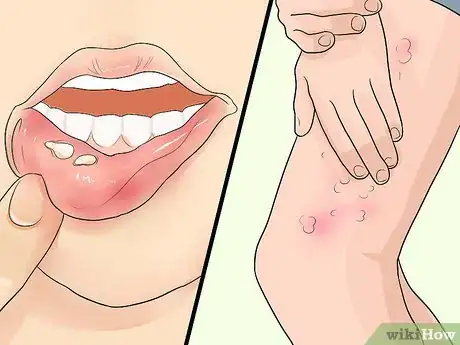
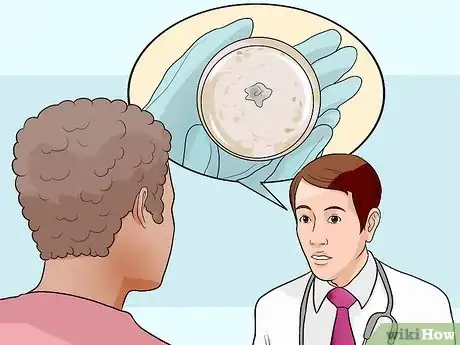
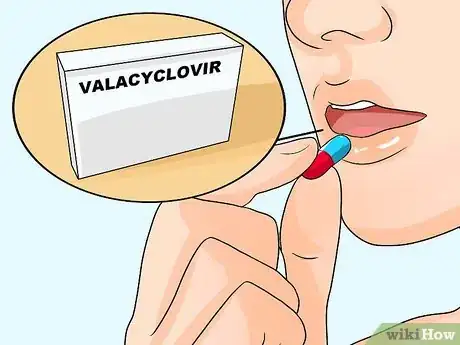

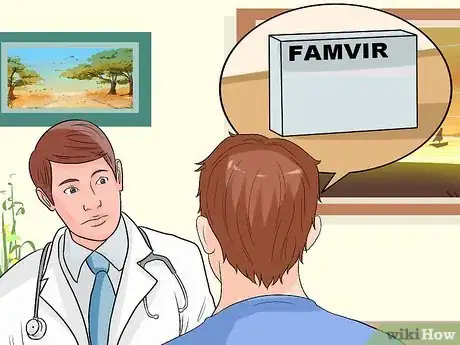


-Step-10.webp)




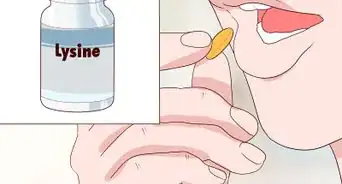









-Step-10.webp)
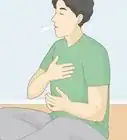





































Medical Disclaimer
The content of this article is not intended to be a substitute for professional medical advice, examination, diagnosis, or treatment. You should always contact your doctor or other qualified healthcare professional before starting, changing, or stopping any kind of health treatment.
Read More...